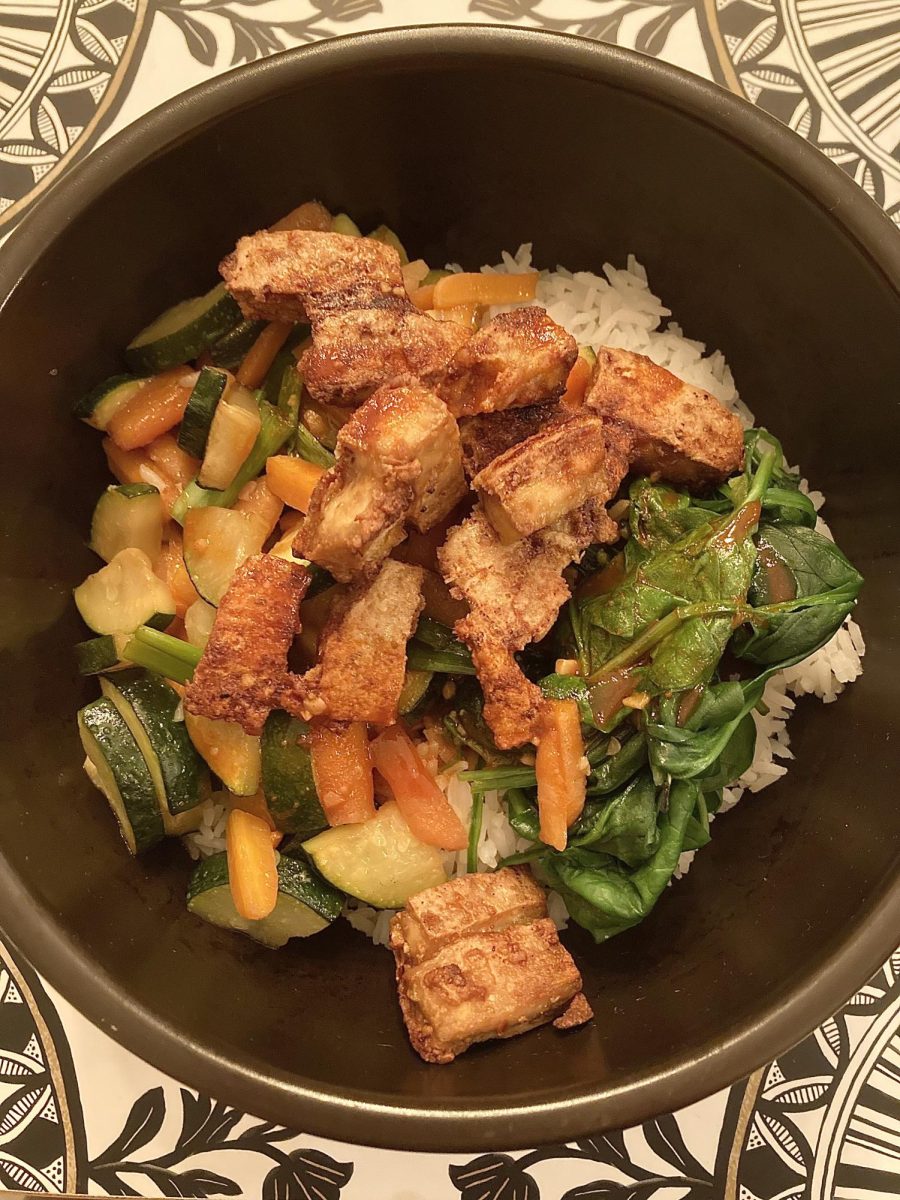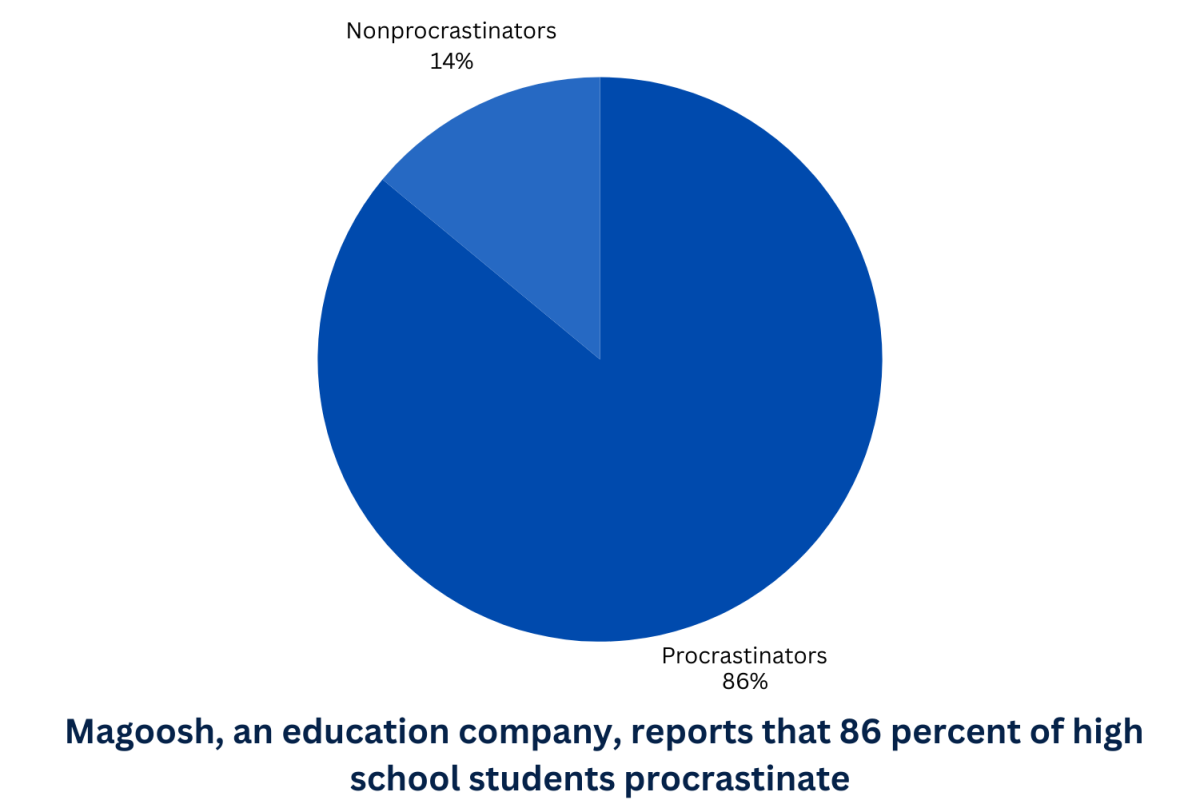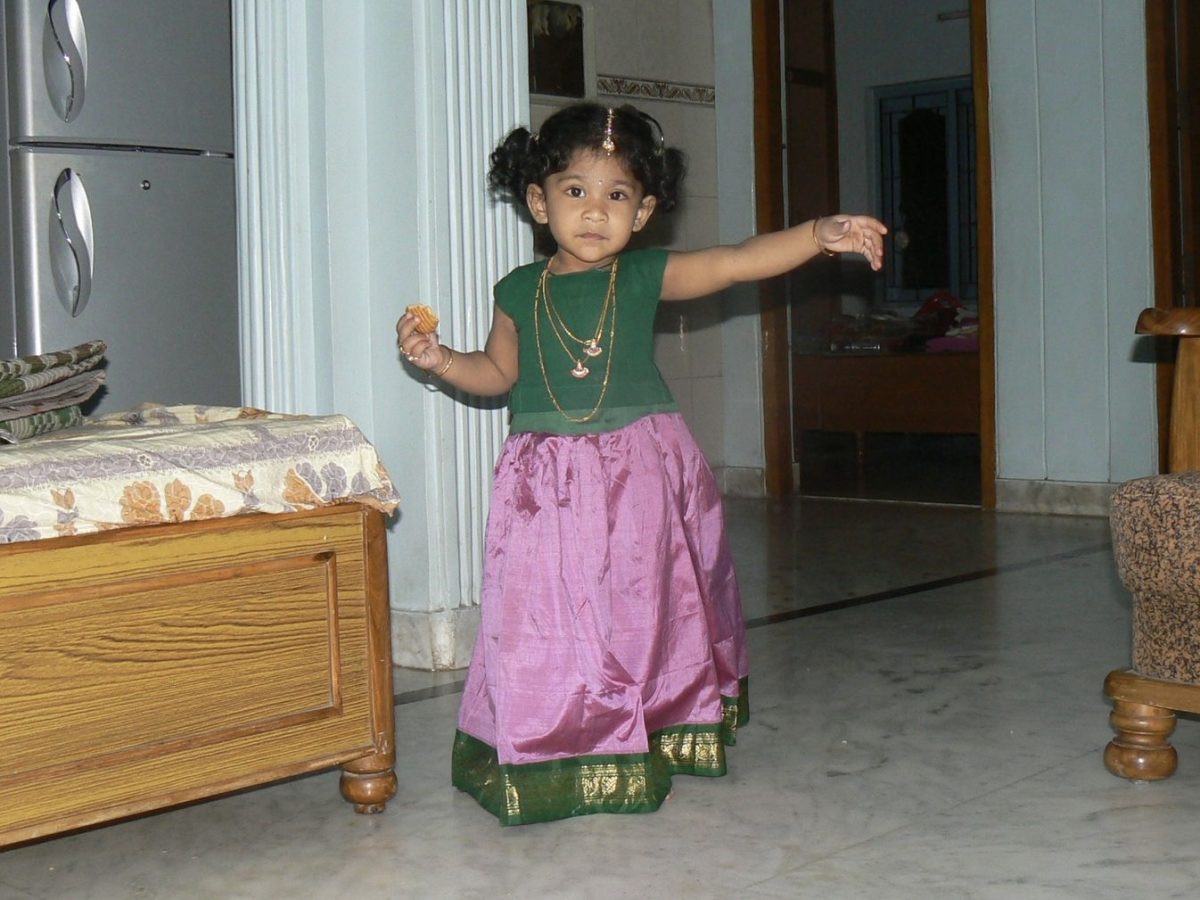In 2023, about 4% of Americans considered themselves to be vegan, according to Statista. India has the largest population of vegans, with about 11%, whereas many European countries have about one to two percent of its population being vegan. Specifically, a vegan diet includes eating no animal products, such as meat, seafood, dairy, eggs and honey.
Today, the vegan lifestyle has grown in popularity, mainly among the younger, more liberal population, Statista found. In fact, since 2015, the Veganuary challenge, where people eat entirely vegan for the month of January, has grown from about 1,200 people to about 700,000 people since 2015, according to a survey conducted by Statista.
You can see the vegan lifestyle advertised in a variety of ways such as through items found in the grocery store and through TV by promoting the latest vegan food options, such as the Impossible Burger by Burger King that’s meant to mimic the taste of meat.
One of the latest ways that the vegan lifestyle is promoted that we can all see today is through social media. Many accounts have surged in popularity as influencers promote the vegan lifestyle through daily vlogs, recipe videos, challenges, hashtags, before-and-after transformations, eye-catching photography and educational videos. Communities and groups have also formed for people to support each other and share recipes and their own personal experiences. Celebrities also use their platforms to attract people’s interest and inspire followers to explore the vegan diet as well. We may not realize it directly, but social media can play a huge roll our daily lives and can affect our stance on certain issues both positively and negatively.
For me personally, I’ve grown into the vegan lifestyle over my four years of being vegan. I found myself with a dairy intolerance in 4th grade and slowly that evolved from taking Lactaid pills into completely cutting out dairy all together. I realized that not only were the Lactaid pills not as effective, but going completely dairy-free to eventually vegan four years ago was easier and better for my overall health. My sister is now also vegetarian and the rest of my family is mostly vegetarian, sometimes disregarding the diet when eating out or on holidays. Over the years, my dad has collected a variety of vegan recipes from a span of different cuisines, including dishes like tofu dolsot bibimbap, red lentil dal and a dish of black beans and sweet potato. I also love to make different homemade snacks, such as chocolate peanut butter protein bars and banana muffins. Our family has adjusted fairly well to the vegan diet.
Being vegan has its challenges, but with today’s society and easy access to vegan products, being vegan has become more accessible for myself and other people following the diet. Grocery stores are now carrying and advertising their vegan products, including plant-based meats and dairy alternatives, as well as labeling packaging to make it easier for people to find vegan options. Restaurants are also carrying more vegan products and more places are labeling their options as vegan and writing the allergens. Some fully-vegan restaurants have opened and some restaurants have even transitioned to being fully vegan.
Yet, being vegan in today’s world can come with struggles, as well as a cost. While vegan products are more widely available in stores, these items can be the most expensive on the shelf. Often these products can be found at specialty stories, automatically meaning everything is going to be quite the upcharge. Yet, at the same time, with not having to buy animal products like meat and seafood, the overall cost can be lower. In addition, more rural or less populated areas can have limited access to grocery stores carrying these products or vegan products in general.
One of the top concerns in switching to a vegan diet from the standard American diet is the nutritional concerns. Many people feel that by not eating meat, they might not get enough protein or vitamin B12. With skipping out on eggs and dairy products, calcium and vitamin D especially need to be watched, according to John Hopkins Medicine.
However, there is a way to still meet the nutrition standards. For example, you can eat high protein foods to meet the protein requirements, including beans, lentils, nuts, seeds and protein-packed meat alternatives. Personally, my dad loves cooking tofu and other legume based dishes, in addition to me making protein bars that can include nut butter and protein powder. We also have a smoothie every morning with oat milk and a couple scoops of protein powder.
To meet the calcium requirements, you can eat lots of veggies such as cooked kale, collard greens and broccoli. You can also eat calcium and other vitamin fortified products. Furthermore, you can take daily vitamins if you’re worried about not getting enough. Working directly with a nutritionist and checking in with a doctor to make sure you’re fueling your body efficiently can also be helpful.
Overall, switching to a vegan diet has made a significant impact on my health and wellbeing. The vegan diet can lower blood pressure and cholesterol, and it can also help lower the risk of certain diseases like heart disease and type 2 diabetes and certain types of cancers like colon cancer, according to RUSH University Health Center. The vegan diet can also promote weight loss, but no matter what diet you’re on, you still have to watch your weight and what nutrients you’re receiving as you can still be overweight or malnourished even with a healthy diet like the vegan diet. Vegans can still fall in the trap of taking in too much refined grains, sugar and junk food. As long as you’re getting the proper nutrition and vitamins, you can easily live a healthy life and not only improve your own quality of life, but others’ and the environment.
With climate change on the rise and with the United Nations’ 2021 report issuing a “code red” for all humanity, meaning that we need to act fast so we don’t put millions of people in danger of natural disasters and rising ocean levels, taking care of our planet has been important to keep on track. Specifically, animal products like beef and dairy generate greenhouse gasses through clearing forests for animal raising, producing animal feed and waste generated from animals like cows and pigs, according to the Humane League. By managing our carbon footprint, we can reduce our planet’s carbon footprint by 73% just by being vegan, according to a study done by Oxford University. In addition, by producing plant based meats, we can emit up to 90% less of greenhouse gasses than producing regular meat, the Humane League finds.
Each year, a cow burps 220 pounds of methane, a greenhouse gas, into the atmosphere, and if you multiply this by 1.5 billion cows in the global food industry, this can be dangerous for our atmosphere, the Humane League reports. Switching to a vegan diet can significantly lower this number and slow global warming. Moreover, the agricultural industry accounts for 70% of global water consumption. Four hundred and sixty gallons of water equals a one-quarter beef patty, which is equivalent to 23 showers.
As previously mentioned, going vegan can reduce greenhouse gas emissions and help combat climate change, as well as helping stop deforestation by using less land for meat and animal production and more for plants, and instead can allow for securing our global food supply to help combat global hunger. If the entire world switches to a vegan diet, we can free up 75% of the land that’s being used to graze animals and produce animal feed to instead use to grow healthy, plant based food and protein to help reduce global hunger, according to the Humane League.
Personally, the vegan diet makes me feel better as I’m contributing – even if it’s a very small percentage – to reducing climate change and impacting our environment positively. I’m also improving my own personal health as I’m reducing my risk of certain health conditions and alleviating myself of symptoms caused by my dairy intolerance. And even if the vegan diet isn’t accessible to you or if you aren’t able to make the switch right now, taking small steps like reducing the animal products on your plate, excluding animal products on certain days of the week or incorporating more plants or plant-based products in your lifestyle, you can gradually start to notice the benefits it brings to your health and how you feel as you see the environment and lives you’re helping around you. With the proper nutrition and education, the vegan diet is possible for you, too.








